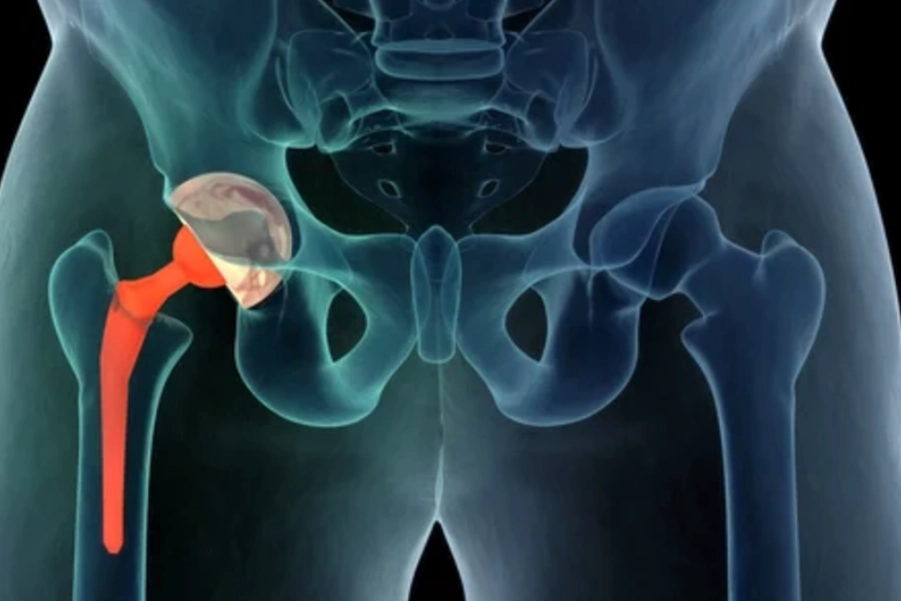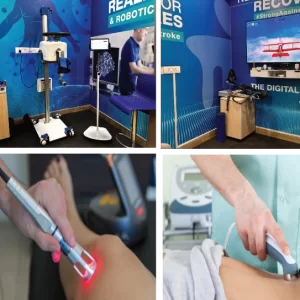WHAT WE TREAT
Hip Replacement Rehabilitation
Best Physiotherapist in Delhi
Learn how hip replacement rehabilitation can help you regain mobility and lead a pain-free life. Explore the stages, exercises, and expert guidance crucial for a successful recovery.
Your Path to a Pain-Free and Mobile Life
Hip replacement surgery can be a life-changing event, offering relief from chronic pain and the promise of restored mobility. However, the journey to full recovery doesn’t end in the operating room. Hip replacement rehabilitation plays a crucial role in helping patients regain their independence and quality of life. In this comprehensive guide, we will walk you through the stages, exercises, and expert guidance needed for a successful hip replacement rehabilitation.
Preparing for Hip Replacement Rehabilitation
Before undergoing hip replacement surgery, it’s essential to prepare for the rehabilitation journey ahead. Steps you can take include:
- Physical Fitness: Strengthen your upper body to compensate for limited lower body movement post-surgery.
- Home Arrangements: Modify your home for easy mobility, including installing grab bars and securing loose carpets.
- Rehabilitation Team: Connect with a rehabilitation team, including a physiotherapist, and surgeon, to discuss post-surgery goals.

Immediate Post-Surgery Rehabilitation
The initial days following hip replacement surgery are crucial. Immediate rehabilitation focuses on:
- Pain Management: Medications are administered for pain relief, allowing patients to engage in early movement.
- Physical Therapy: Simple exercises are introduced to promote circulation and reduce the risk of complications.
- Ambulation: Patients are encouraged to stand and walk with assistive devices, such as walkers or crutches, under supervision.
Inpatient Rehabilitation
For some patients, inpatient rehabilitation in a specialized facility may be necessary, particularly if there are complications. This stage includes:
- Intensive Physical Therapy: Daily sessions help patients regain strength, balance, and confidence in mobility.
- Pain Management: Medications are adjusted as needed, and alternatives like ice therapy are explored.
- Occupational Therapy: Techniques for performing daily activities with limited mobility are taught.
Home-Based Rehabilitation
Most patients will transition to home-based rehabilitation after inpatient care. This stage involves:
- Continued Physical Therapy: Patients follow an exercise plan designed to increase hip strength, flexibility, and mobility.
- Stair Training: Patients practice safe stair climbing and descending, often with the assistance of a handrail.
- Assistive Devices: Depending on progress, the use of assistive devices may decrease.
Long-Term Rehabilitation
Recovery continues long after returning home, focusing on:
- Strength and Endurance: As pain decreases, exercises become more challenging, enhancing strength and endurance.
- Mobility and Gait Training: Patients refine their walking pattern and work on balance.
- Functional Activities: Training for daily tasks like dressing, grooming, and using the restroom.
Expert Guidance and Monitoring
Throughout the rehabilitation process, expert guidance is essential:
- Physiotherapist Support: Regular sessions with a physiotherapist are necessary to track progress and adjust exercises.
- Surgeon Follow-ups: Scheduled appointments with the surgeon are crucial for monitoring surgical success and recovery.
Preventing Complications
Understanding potential complications and taking preventive measures is vital:
- Blood Clot Prevention: Patients may be prescribed blood thinners to prevent deep vein thrombosis.
- Infection Awareness: Any sign of infection around the surgical site should be immediately reported.
Successful Rehabilitation Tips
To ensure successful rehabilitation, consider:
- Patience: Understand that recovery takes time, and it’s important to stay committed.
- Support System: Lean on family and friends for emotional support and practical assistance.
- Healthy Lifestyle: Maintain a balanced diet and avoid smoking and excessive alcohol consumption.
Hip replacement surgery is a significant step towards a pain-free and mobile life. However, the journey doesn’t end in the operating room; hip replacement rehabilitation is essential for a successful recovery. With the right preparations, immediate post-surgery care, inpatient and home-based rehabilitation, and long-term commitment to exercises and therapy, patients can regain their independence and improve their quality of life.
Role of physiotherapy after hip replacement
The role of physiotherapy after hip replacement surgery is crucial in ensuring a successful and optimal recovery for patients. Hip replacement, also known as hip arthroplasty, is a surgical procedure in which a damaged or arthritic hip joint is replaced with an artificial implant. After the surgery, physiotherapy plays a vital role in helping patients regain mobility, reduce pain, and improve their overall quality of life. Here are some of the important roles of physiotherapy in the post-hip replacement period:
Pain Management:
One of the primary goals of physiotherapy after hip replacement is to manage and reduce post-operative pain. Physiotherapists use various techniques to alleviate pain, such as gentle manual therapy, modalities like ice or heat, and positioning to minimize discomfort.
Early Mobilization:
Physiotherapists encourage early mobilization to prevent complications like blood clots and stiffness. They teach patients how to move, stand, and walk with assistive devices like walkers or crutches in the initial days after surgery.
Range of Motion Exercises:
To prevent joint stiffness and improve flexibility, physiotherapists guide patients through a range of motion exercises that gently stretch the hip joint. These exercises help restore normal movement and flexibility.
Strengthening Exercises:
Building strength in the hip and surrounding muscles is essential for hip joint stability and improved function. Physiotherapists design exercises to strengthen the muscles, which also aids in long-term pain management.
Gait Training:
Physiotherapists work on correcting the patient’s gait and walking pattern. They teach proper techniques for walking and stair climbing to ensure safe and efficient mobility.
Transfer and Mobility Skills:
Learning how to transfer in and out of a bed or chair safely is a critical aspect of physiotherapy after hip replacement. This skill promotes independence in daily activities.
Balance and Coordination:
Balance and coordination are essential for preventing falls. Physiotherapists employ exercises that challenge balance and enhance coordination to reduce the risk of post-surgery falls.
Home Exercise Program:
Patients are typically given a home exercise program to continue their rehabilitation independently. These exercises help maintain the progress made during supervised physiotherapy sessions.
Individualized Treatment Plans:
Physiotherapists create personalized treatment plans tailored to the patient’s specific needs and goals. The treatment plan takes into account factors like age, overall health, and the type of hip replacement performed.
Education and Lifestyle Advice:
Physiotherapists provide valuable education on lifestyle adjustments and precautions necessary to protect the newly replaced hip joint. This includes guidance on post-surgery activities, movement restrictions, and fall prevention.
Monitoring and Progress Assessment:
Physiotherapists closely monitor the patient’s progress throughout the rehabilitation process. They adjust the treatment plan as needed to ensure that rehabilitation goals are met.
Emotional Support:
Coping with the challenges of hip replacement surgery and the recovery process can be emotionally taxing. Physiotherapists provide emotional support and encouragement to help patients stay motivated.
Role of physiotherapy after hip replacement is multifaceted and essential. It encompasses pain management, mobility improvement, exercises for strength and flexibility, gait training, balance enhancement, and much more. A comprehensive physiotherapy program is key to helping patients regain their independence and enjoy a pain-free life after hip replacement surgery.

Cutting-Edge Technology
Our commitment to using the best technology extends to various aspects of physiotherapy:
- Robotic Assistance: We employ robotics for gait training, aiding patients with mobility impairments. These devices facilitate improved motor control and muscle activation.
- Electrotherapy: Techniques like TENS, IFT, and Ultrasound Therapy are used to target pain relief and accelerate tissue healing.
- Virtual Reality (VR): We utilize VR and interactive gaming for engaging and enjoyable rehabilitation, increasing patient motivation and compliance with treatment.
Frequently Asked Questions
Reach out to us if you have further Questions - We're here to help!
Q1: How soon can I begin hip replacement rehabilitation after surgery?
A1: Rehabilitation usually begins on the first day post-surgery with gentle exercises to promote circulation. A physiotherapist guides the process.
Q2: How long does the entire hip replacement rehabilitation process take?
A2: The duration varies from patient to patient. While some people make significant progress within weeks, full recovery can take several months. Consult with your surgeon and physiotherapist for a personalized timeline.
Q3: What exercises are typically included in hip replacement rehabilitation?
A3: Exercises include gentle leg raises, ankle pumps, thigh squeezes, and hip abductions. These aim to improve strength, flexibility, and mobility.
Q4: Are there any specific precautions I should take during hip replacement rehabilitation?
A4: Patients should avoid high-impact activities and maintain proper wound care. It’s crucial to follow the guidance of the rehabilitation team.
Q5: Can I return to sports or vigorous physical activities after hip replacement rehabilitation?
A5: In most cases, patients can return to low-impact activities, but it’s essential to discuss specific activities and timelines with the surgeon and physiotherapist.
Have Questions or Need Assistance?
Don’t hesitate to reach out to us:
Book Appointment with Experts
- Call/WhatsApp: +9818911195
- Book Appointment with Experts
We are here to lend our support on your journey toward improved movement and overall well-being.
See all Blogs & Articles
See all Conditions we Treat
Note: Content provided here is for informational purposes only and is not a substitute for professional medical advice or diagnosis. If you believe you are experiencing pain or any other health-related issue, it is important to seek the advice of qualified healthcare professionals for a proper evaluation and treatment plan.


